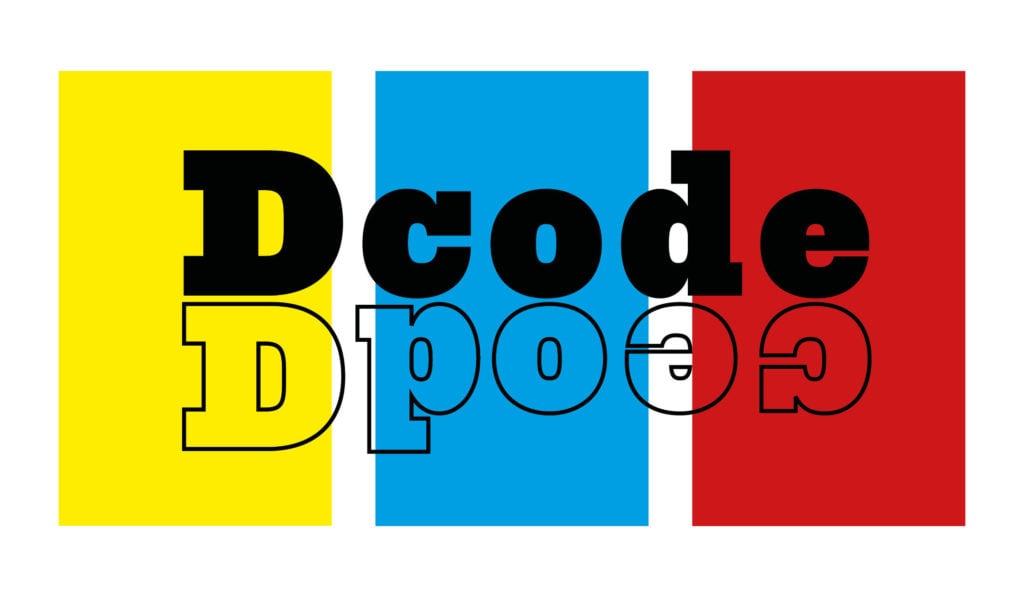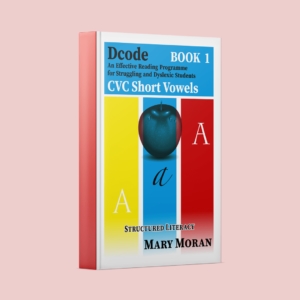Jump into Blends for Early & Struggling Readers: Dcode Book 2 – Blends
€30.00 Original price was: €30.00.€25.50Current price is: €25.50.
Consonant Blends for Early Readers!
Dcode Book 2 – Blends builds on the essential phonics skills introduced in Book 1, guiding early readers through consonant blends, digraphs, and trigraphs. This structured literacy resource helps students recognize and decode sound combinations, such as /bl/ in blend, /sh/ in wish, and /tch/ in catch, reinforcing phonemic awareness and spelling patterns.
Using explicit, systematic instruction, this book aligns with the science of reading, ensuring learners develop strong decoding skills that support reading fluency and comprehension. The accompanying drill cards provide multisensory reinforcement, encouraging repeated practice through visual, auditory, and kinesthetic engagement.
Designed for early primary students, particularly those who need extra support, Dcode Book 2 follows a cumulative learning approach, building confidence and mastery in foundational literacy skills. Perfect for classrooms and intervention programs, this book empowers young learners to read with accuracy and confidence.
Schools which prefer to deal directly with us can email: sales@dcodedyslexia.com
Connect with Dcode Dyslexia: Follow Mary on Instagram at https://www.instagram.com/dcodedyslexia/
Read our latest insights on our blog: https://dcodedyslexia.com/blog
Take the Next Step: Mastering Consonant Blends for Early and Struggling Readers, Digraphs & Trigraphs with Dcode Book 2, Blends
Building on the foundational skills established in Book 1, this second book introduces essential phonological components that are critical for early reading development. Specifically, students are guided through the recognition and application of consonant blends at both the initial and final positions of words. These blends—such as /bl/ in ‘blend‘ or /st/ in ‘stop‘—require explicit instruction, as they involve processing multiple phonemes within a single syllable. Mastering these phonetic structures enhances decoding efficiency, a key predictor of reading fluency.
In addition to blends, this book includes dedicated instruction on digraphs and trigraphs, which play a crucial role in orthographic mapping—the process by which students form lasting connections between sounds and letter patterns. Digraphs, such as /sh/ in ‘wish‘, combine two letters to represent a single sound, reinforcing the concept that letters function in patterns rather than isolated units. Similarly, trigraphs, like /tch/ in ‘catch‘, introduce students to more complex sound-spelling correspondences that strengthen their phonemic awareness.
The integration of structured literacy principles ensures that students engage in structured, systematic, explicit instruction that supports their reading acquisition. The accompanying drill cards serve as an essential tool for reinforcing these concepts through multisensory learning—repeated exposure, verbal articulation, and visual recognition. Structured literacy approaches emphasize cumulative practice, allowing students to solidify their understanding of these phonetic elements over time.
Research in the science of reading has demonstrated that direct phonics instruction, particularly in early primary years, significantly improves word recognition, spelling, and reading comprehension. By incorporating a sequence that builds progressively from simple to complex phonological structures, this book aligns with evidence-based practices that support literacy development in young learners.
Follow Mary on Instagram at https://www.instagram.com/dcodedyslexia/
Read our latest insights on our blog: https://dcodedyslexia.com/blog
| Weight | .485 kg |
|---|
Only logged in customers who have purchased this product may leave a review.
Related products
-
Books
Decodables, Set 2, BLENDS.
Rated 0 out of 5€29.50Original price was: €29.50.€23.00Current price is: €23.00. Add to basket -
School Bundles
5-Pack of Decodables, Set 2!
Rated 0 out of 5€147.50Original price was: €147.50.€95.00Current price is: €95.00. Add to basket -
Books
Proven to work for dyslexics! Book 6 – r Controlled Vowels
Rated 0 out of 5€30.00Original price was: €30.00.€25.50Current price is: €25.50. Add to basket -
Books
Unlock CVC Short Vowels Dcode Book 1
Rated 0 out of 5€30.00Original price was: €30.00.€25.50Current price is: €25.50. Add to basket







Reviews
There are no reviews yet.